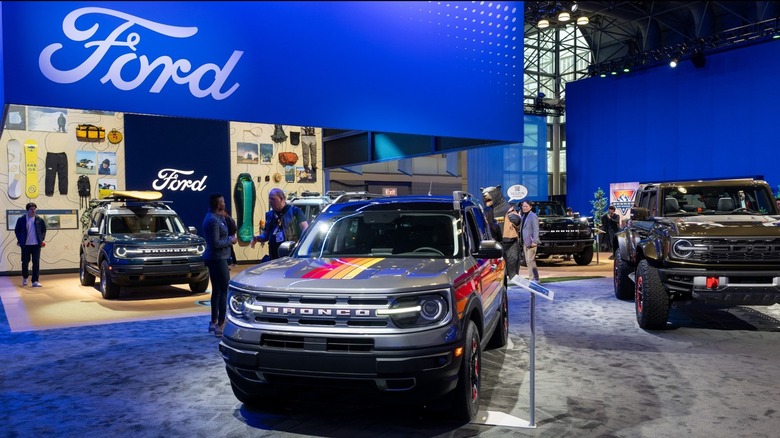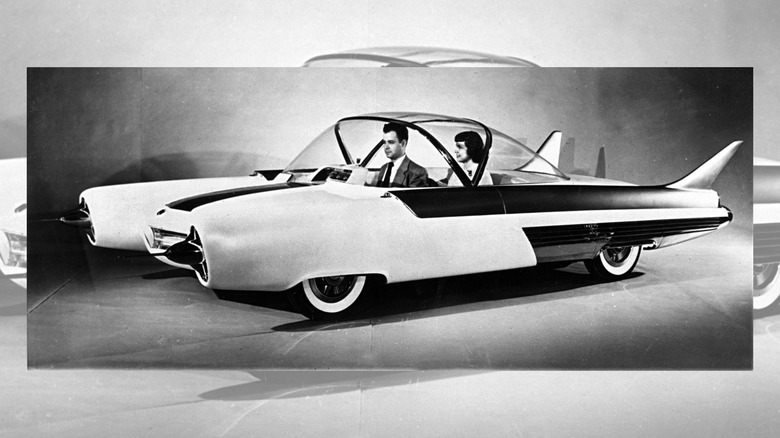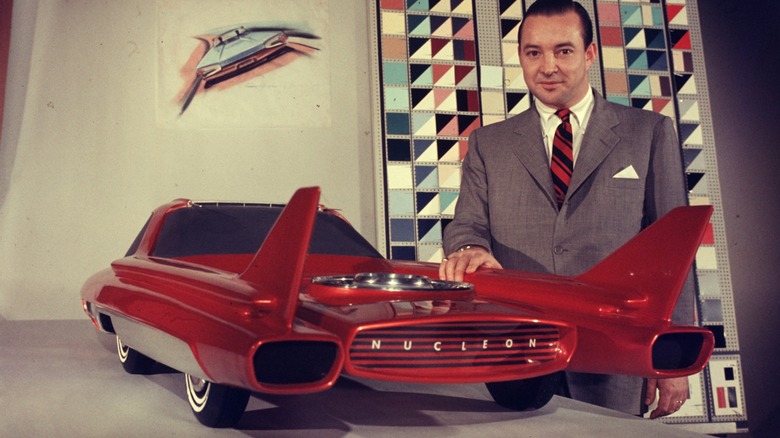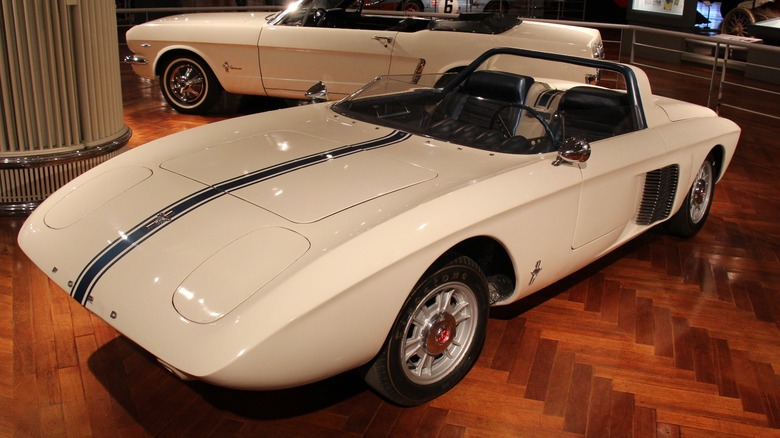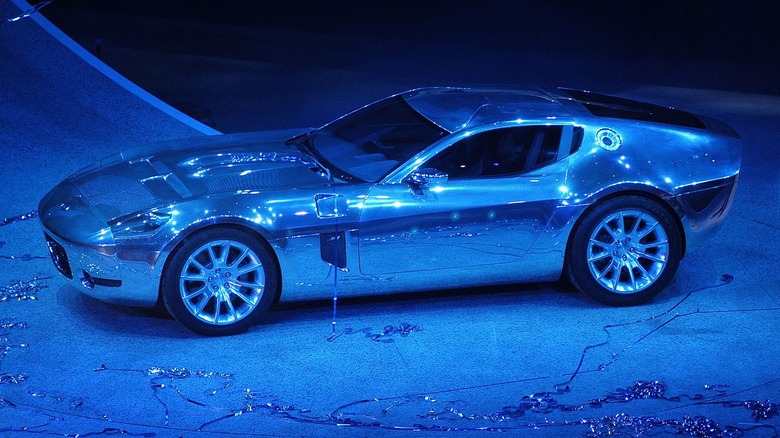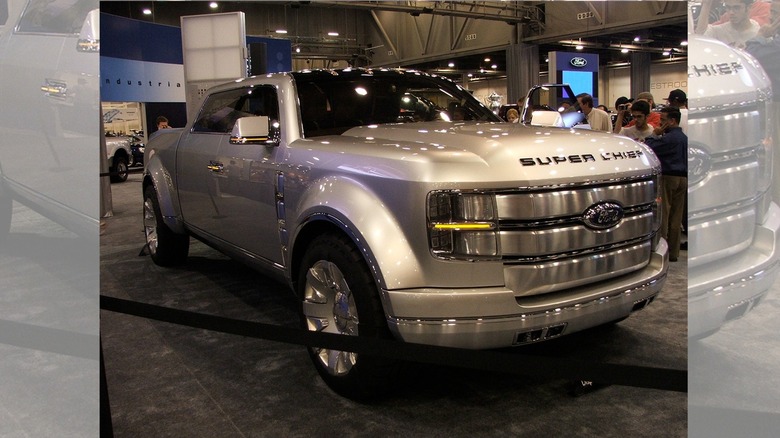5 Ford Concept Cars You've Probably Never Heard Of
Although Ford isn't one of the five oldest brands in the world, it's still one of the few carmakers that are over a hundred years old. The company wouldn't have gained this longevity if it hadn't made some successful models, like the Ford Model T and its F-series trucks. And with its long and outstanding history, Ford has surely made some iconic cars and trucks, too.
But even before a car makes it on the dealer showroom and on to public roads, a carmaker must first gauge whether the public is even interested in its concept. That's why automakers often make concept cars to show off during car shows. Concept cars could be pricey to build, especially if it's just a one-off model. But it's much cheaper than investing in a complete assembly line and all the necessary tooling for a car that will flop.
Concept cars are great for testing out experimental features and looks, helping the car brands determine if their plans and vision will actually work out. But even though many concept cars look great and interesting, only a few make it to production — and those that do often have many changes that make them more practical, easier to produce, and road legal, too. As for the rest, they mainly remain on the stage and in our memories. Ford isn't exempted from this truth, but it doesn't mean that we should just forget its concept cars. So, let's look at some Ford concept cars that only a few probably remember.
1954 Ford FX-Atmos
The 1950s saw the arrival of the space age, especially as the space race was in full swing around the middle of the decade. Car designs were starting to get rocket and space themes during this time because of this trend, with many models featuring large tailfins. Ford was aware of the futuristic trend going on during that time, so it made a concept car that capitalized on it.
This model was the Ford FX-Atmos, which was first shown during the Chicago Auto Show in March 1954. It features a centrally seated driver (which was made famous by the rare McLaren F1), a two-lever steering setup reminiscent of jet controls, and it had bubble canopy similar to that of the jet fighters used in the Korean War. It also had a 'Roadarscope' radar screen on the dash, which provided information to the driver when on the freeway.
Externally, the car has two antennae protruding at front, which could poke any unsuspecting pedestrian. It also has rear lights shaped like rocket exhausts and the tailfin that 50s cars are known for.
1958 Ford Nucleon
Aside from the space race, the 50s were also all about nuclear technology. This was when the first nuclear power stations started operating, and aviation engineers started dreaming about nuclear-powered planes. Much like how auto engineers started experimenting with putting turbine engines from airplanes into cars, they've also thought about putting small nuclear cores in a car.
This is where the Ford Nucleon comes in. Although the company never made a full-scale concept car for this vehicle, what made it interesting was that it has a 5,000-mile range on a single nuclear core. It was about the size of the 2023 Ford Maverick, but its wheelbase was shorter than that of the original Mini.
The Nucleon's reactor core would be placed at the rear of the car, and photos show that it sits entirely within the car's wheelbase. This makes sense because we anticipate that nuclear reactors will be heavy because of all the shielding required to protect the people around the vehicle. On the other hand, the cabin seems to be in front of the tires, resulting in a massive overhang.
Of course, the Nucleon would've never made it into production. Aside from the weight and massive size nuclear reactors, there's also the risk of irradiating half of the road if ever a nuclear-powered car gets into an accident.
1962 Ford Mustang I
The Ford Mustang is one of the most iconic names in the Ford lineup, especially as the Mustang's many generations have taken away the breath of many car enthusiasts since it came out in 1964. But the first Mustang concept is far removed from the Mustang that we know today. The first car to carry the Mustang nameplate isn't a pony car. Instead, it's a two-seat roadster that Ford showed off at the U.S. Grand Prix in 1962.
It lacked a roof, and it didn't even have a windshield — it just has a wind deflector to get rushing air out of the driver's face. It also had a rear-mounted V-4 engine — which was the first time that Ford used that layout; although the company used the rear-engine, rear-wheel drive design soon after in the Ford GT40. Aside from that, the Mustang I had pop-up headlights, giving it a sleek, aerodynamic look. However, these pop-up headlights were manually operated, so you had to get out of the car and manually open them up if you needed to turn on the lights.
The Mustang that Ford launched in 1964 is a totally different beast, and it deserves its spot in our list of the coolest American pony cars. However, we also wish that Ford made the Mustang I concept into real production vehicle. After all, with just a few tweaks, the Mustang I could've been turned into a great American roadster that could compete with the likes of the Mazda Miata.
[Featured image by Sicnag via Wikimedia Commons | Cropped and scaled | CC BY 2.0]
2005 Ford Shelby GR-1
Ford produced the Ford GT from 2004 to 2006, which is technically the automaker's first supercar you can buy from the dealer. However, the company knew that it already needed to make a successor to this future classic soon after its launch, so the company commissioned its Advanced Product Creation team to develop a fully working concept.
This project resulted in the Ford Shelby GR-1, a 605-hp V10 supercar with body lines inspired by the Shelby Cobra Daytona Coupe, one of the six cars that defined Carroll Shelby's legacy. Its muscular look and fastback styling makes it far different from the Ford GTs low-slung sleek look. Although the concept car had an aluminum chassis and body, it still weighed a massive 3,900 lbs.
Unfortunately, the GT didn't sell as well as Ford had hoped. At the end of its run, Ford only sold 4,000 of the planned 4,500 units. Since the company expected the GR-1 to suffer the same fate, it halted production of the GT's original successor even before it began.
2006 Ford F-250 Super Chief
Many American carmakers make large luxurious trucks today, but Ford saw the writing on the wall almost 20 years ago when it made the Ford F-250 Super Chief. Even by today's standards, the Super Chief could defeat many modern trucks in extravagance, opulence, and comfort. It had rear-opening suicide doors, giving passengers ample space to move about. It also had a glass roof to deliver more light to the cabin. The rear passengers also had so much legroom that Ford fit two ottomans in the back.
But what made the Super Chief so much more interesting was its engine. It had a 6.8-liter supercharged V10 that could output as much as 280 hp and 400 ft.-lb. of torque. While it might not sound much today, those were reasonable numbers back in 2006. More than its power output, it's the Super Chief's choice of fuel that made it stand out.
You can pick between regular gasoline, E85, or even hydrogen to run the engine. To be clear, this is not just a fuel option that you have to pick out when you're purchasing the truck — instead, you can choose any of these three fuel sources wherever you are, ensuring you'll never find yourself stuck in the middle of nowhere because you can't find a hydrogen pump near you.
[ Featured image by Rusty Cooper via Wikimedia Commons | Cropped and scaled | CC BY 2.0 ]
